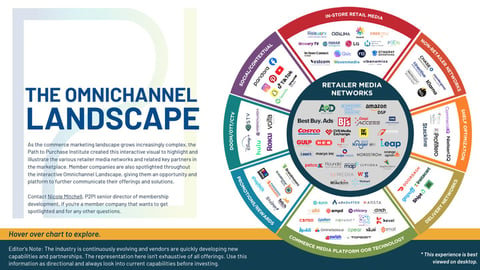Worlds Colliding: Omnichannel Analytics Must Evolve as Decentralized Commerce, Virtual Shopping, and the Supply Chain Disrupt Status Quo
Try to analyze your business based on traditional silos of commerce, and you are only looking at a fraction of the story. As commerce undergoes the most radical transformation in history, changes toward a virtualized shopping experience (i.e., the metaverse), decentralization of the source/destination of sales opportunities, and fragmentation of the global supply chain are all forcing brands to make innovative data-driven decisions (look no further than Walmart’s new virtual fitting room and L'Oreal's collaboration with TikTok to see some examples of IRL business innovation).
Without proper collaboration between brands, suppliers, and providers of modern omnichannel analytics solutions, many organizations may fail to adapt to the current changes in global commerce, which makes a currently challenging situation for consumers even worse.
Further, the need for suppliers to have access to daily, full-category competitive digital shelf intelligence has become mission critical as they look to retain category leadership, drive market share strategies, and support brands’ growth agendas.
Given the current situation, here are some recommendations on what brands can do to take advantage of current shifts in, and future development of, the next generation of manufacturing, distribution, logistics, and CPG industries.
Scrutinize the Data
To help suppliers truly understand how they’re performing at retail, including win/win scenarios for the supplier and brand, make sure to attain competitive search performance insights. This allows suppliers to monitor rankings and intervene if, for example, the brand changes its taxonomy and unknowingly affects category bestsellers and poses a threat to devaluing the category.
Reframe Your Understanding of Omnichannel
While omnichannel analytics is often considered to be singular data sets, successful actions are only properly informed through the intersection of myriad key data sets across all brand analytics functions, making the solutions required as diverse as the data sources that are necessary.
More than Forecasting
While omni-channel analytics should inform demand planning, the following should also be considered.
- Space Planning (physical and virtual): Measure and optimize share of search — which is your representation in the category — against key competitors for any given brand.
- Retail Execution (physical and virtual): Review past promotions and price campaigns, and assess their impact on sell-through, inventory, and depletion. This will predict the impact of future campaigns and ensure suppliers have the right assortment and sufficient inventory levels across all channels.
- Logistics: Robust multi-location availability monitoring on a store-by-store level is critical because CPGs can pay a high price for stockouts, especially on the digital shelf.
Analytics and The Metaverse
Soon we will be shopping for products with our own avatar, walking through virtual malls and virtual stores, trying on clothes and shoes and purchasing in metaverse environments. CPG suppliers must consider data analytics to stay cutting edge and respond to the demand on today’s digital shelf and the future metaverse. Those suppliers adopting digital shelf analytics in the metaverse will continue to innovate faster and at scale given the capacity to receive shopper feedback in real time for new product launches or changes to products.
—Binn Ross, VP of Client Success at ATLAS Technology Group, Inc.




